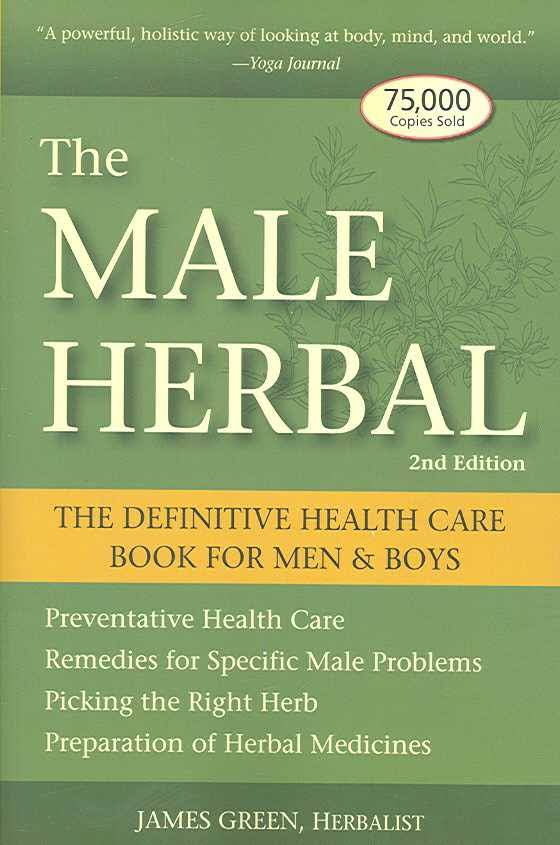Healthy Food Storage
Published: Wed, 10/19/16
October 19, 2016
A Bountiful Harvest of Healthy Food Storage Tonya Judd, M.H.

It’s fall and with it brings an amazing array and quantity of delicious fruits, vegetables, grains, beans, legumes, nuts and seeds. Now is the perfect time to stock up and preserve this wonderful harvest so that we can enjoy these until next season.
Oft times, food storage is thought of as an emergency backup plan in case a major catastrophic force of nature swoops in and leaves nothing but destruction in its path such as earthquakes, hurricanes, tornadoes, flooding etc. Yet there are many other life emergencies that would warrant having a store of basic food items and herbs; loss of employment, ill or injured and unable to work, a reduction in income, etc. Many individuals have no food or water stored for such events and many
of those who do, oft times store foods that they have no idea if they like and have no idea how to use. For example; wheat is an excellent storage item. However, storing wheat and not using it or not knowing what to do with it will do you no good. If you and your family are not accustomed to eating wheat and foods made with wheat, you may have several weeks intestinal discomfort. I use wheat only as an example. There are many who have food sensitivities and/or food preferences. Having a store of
food that is conducive to your eating lifestyle brings peace of mind. In any given situation, your body will be under enough stress without adding to it the stress of foreign foods, preservatives and chemicals that your body is not accustomed to digesting and that weaken your immune system and zap your energy. Many “food storage” companies sell foods that have an optimal shelf life, yet lack the nutrition your body needs, especially in an emergency situation. The focus of
this newsletter topic is to encourage you to store and consume foods that will bring optimal health now and in an emergency situation and to encourage you to begin taking charge of your health now, so that if, or when such life situations arise, your body and mind will be able to handle the stresses placed on them with greater ease.
If you or your family do not like a particular food do not invest in it for storage just because it is high in nutrition or because it has an extended shelf life. The old adage that if someone is hungry enough they will eat anything is totally false!
Many companies have sales on bulk items such as bulk quantities of grains, nuts, fruits, etc. during the fall. There are also mail order companies or delivery companies that sell food items in bulk. Look for co-ops or buying groups in your area. One company I really like is Azure Standard. They have great prices, amazing products and people with true integrity. Check with your grocery store or health food store and ask what discounts they offer if you buy in
bulk. Another option would be to shop at big box stores. Once again, please read the labels! I recently had a large number of people coming for dinner and found that I was out of beans and was in need of one more can to complete my recipe. I went to the store and grabbed the best brand available and found that since the last time I had purchased this particular brand, they had added several ingredients: sugar and several preservatives. I decided to make the recipe
without the extra beans. I guarantee that after that family event was over, I made sure to cook a large pot of beans and get them in the freezer for the future!
Suggested items to store:
Clean Water:
This is number one on my list of must haves. Our bodies are made of 60-75% water. The human body can live without food for roughly 3 weeks, but we cannot live without water for more than a few days to a week. The minimum requirements are at least 1 gallon per person per day. Keep in mind that you will also need extra water to sprout any seeds and rehydrate any freeze dried or dehydrated foods you have stored.
Fruits:
Fruits can be frozen, dehydrated or freeze dried for optimal nutrition.
Vegetables:
Vegetables can be frozen, dehydrated or freeze dried for optimal nutrition. Another option is to buy canned vegetables or better yet, can your own (this way you know what’s really in that can!)
To freeze fruits and vegetables, wash and pat dry and freeze on cookie sheets or trays and freeze and then place in freezer containers. This keeps the fruits and veggies from clumping in one massive clump and makes it easier to take out the amount you want without defrosting/thawing the whole bag.
Whole Grains:
Wheat, buckwheat, barley, millet, brown rice, quinoa, rye, spelt, amaranth, corn and many more. Grains that are high in oils such as brown rice do not store for very long. My suggestion to extend the shelf life of these grains would be to store these in a cool, dark place or in glass canning jars that have been sealed with Food Saver type sealer. Most other grains will store for many years!
Nuts:
Almonds, walnuts, pecans, pistachios, Brazil, pinenuts, etc. are a powerhouse food source. They can be soaked/sprouted, dehydrated, made into nut milk and nut butters and used as a meat substitute. Nuts and seeds are high in oils and can go rancid quickly. Store them in the refrigerator or freezer to extend the shelf life for years. Make sure to store them in airtight jars so that they will not pick up the “freezer taste.”
Seeds:
Sprouting seeds: Amazing nutrition is produced from sprouting seeds. Sprouting gives you the luxury of having fresh vegetables at your fingertips within a matter of days depending on the sprout. Sprouts contain 20-50% more nutrients than their full grown counterparts. You can also allow your sprouts to grow for a longer time frame wherein you will then have micro-greens. Seeds should be stored in a cool, dark place for optimal shelf life and can be stored in the freezer as
well.
Seeds for eating:
Flax, chia, sesame, sunflower, pumpkin, etc. Chia and flax can be used as binders and in place of eggs in most recipes. Seeds are great sources of nutrition.
Seeds for planting a garden:
Make sure these are non-GMO seeds and non-hybrid seeds. Many vegetables can be grown in a cold frame, poly tunnel, and even indoors during the cold winter months. Peas, lettuce, kale, etc. are all great cold weather crops.
Olive oil, coconut oil and other healthy oils:
Healthy oils are a beneficial part of our daily diet and offer a multitude of benefits and are very nutritive. These oils and oils from avocados, nuts and seeds help with brain health, skin, and organ health.
Beans and legumes:
You can sprout your beans and legumes for optimum nutrition and to help eliminate gas. Beans can be dry or canned. Be cautious with any canned item from the store as many food companies are now adding sugar and other “additives” to their foods, especially beans and tomato products. Remember, you can always bottle your own or make a large batch and freeze them!
Raw honey, maple syrup and blackstrap molasses:
Raw honey is excellent for allergies, for making the Dr. Christopher strep throat remedy, and naturally adding sweetness to your recipes. Blackstrap molasses is an excellent source of iron and is also great for helping the bowels to move.
Apple Cider Vinegar:
This is great for salad dressings, it can be mixed with water and honey for ailments, helps aid digestion, can be used as a solvent for infusing herbal medicine, can be used for pickling and a multitude of other uses.
Spices:
Have a variety on hand to make meals delicious. Make sure you spices are fresh. A good indicator is as follows: If you can’t smell them, you won’t be able to taste them. Buying spices in bulk will save you a lot of money. For example, 1 pound of cinnamon can be purchased for $7.85, if you buy cinnamon in the 2 oz. bottle at the grocery store you will most likely be paying $2-$4.
Real Salt, Sea Salt, etc.:
Real salt and sea salt are unprocessed salts that contain minerals that our bodies need and aren’t filled with anti-caking agents and sugar that processed salt contains.
Herbs to use for healing:
Make sure to have herbs stored to take care of yourself and your family on a daily basis.
Green powders:
For extra nutrition, green powders such as wheat grass powder and barley grass powder can be mixed in water, added to smoothies, for days when you are on the go or in a pinch to get the nutrition you and your family need. Make sure to check the labels for any unwanted ingredients.
Garlic, apples, and root vegetables store nicely when kept in cold, dark storage areas.
There are a multitude of food storage companies out there that offer delicious freeze dried fruits and vegetables. Make sure to do your homework and ask a lot of questions. Read the labels and search for foods that are minimally processed.
Food storage is not something you stick on a shelf in the basement in case something happens. Store what you eat and eat what you store. This will allow you to enjoy the peace and empowerment of being self-sufficient and enjoying optimum health now and in any situation! Our bodies were created to be healthy and we are “created that we might have joy.” That joy comes with taking responsibility.
Tonya Judd is a Master Herbalist graduate of the School of Natural Healing.
Printable Version: http://www.herballegacy.com/
If you missed an article be sure to visit http://www.herballegacy.com and click on Articles. Also, take advantage of David Christopher's Radio Show (see Resource Links below for more information).
Back in Stock!
The Male Herbal - The Definitive Health Care Book for Men and Boys

New at Christopher Publications:

Interviews with pharmaceutical insiders, doctors, politicians and parents of vaccine-injured children
reveal an alarming deception that has contributed to the skyrocketing increase of autism
and potentially the most catastrophic epidemic of our lifetime.
Get the Vaxxed DVD from Christopher Publications today
Flax or Chia Egg Replacement #1
To make the “egg” mix:

1 Tablespoon GROUND flax or chia seed
3 Tablespoons water
Mix well and let stand for a few minutes. 1 Tablespoon of this mixture = 1 egg.
Flax or Chia Egg Replacement #2
1 cup water
2 Tablespoons of flax seeds or chia seeds
Bring to a boil and boil until frothy {2-4 minutes}. Strain through a fine mesh sieve. Return the seeds to the saucepan and add 1/2 cup more water and repeat the process one more time.
1/4 cup gel = 1 egg.
Flax or Chia Egg Replacement #3
For this option, please go to the link provided below:
www.morphyandme.com/flax-gel-egg-replacer-recipe
Printable Version: http://www.herballegacy.com
Herbal Resource Links
- Herbal Legacy - http://www.herballegacy.com - Our free information website
- The School of Natural Healing - http://www.snh.cc - Quality Education since 1953
- Christopher Publications - http://www.christopherpublications.com - Dr. Christopher's books and more
- Christopher Websites - http://www.christopherwebsites.com - Find all Christopher websites and other great resources
- A Healthier You Radio Show - http://www.ahealthieryouradio.com - Free weekly radio show
The School of Natural Healing: http://www.snh.cc
Christopher Publications: http://www.christopherpublications.com
NOTICE: All information in this newsletter is given out as information only and is not intended to diagnose or prescribe. For our official Disclaimer, Biological Individuality, Important Notice & Terms of Use please see: http://www.herballegacy.com/Disclaimer.html
This newsletter is sent by permission only - you can unsubscribe quickly and easily by clicking the link below.
.

